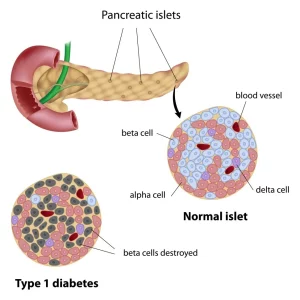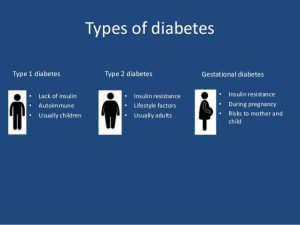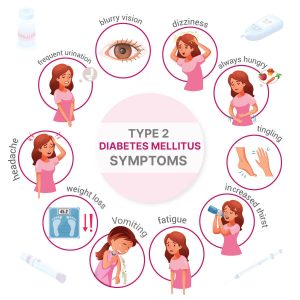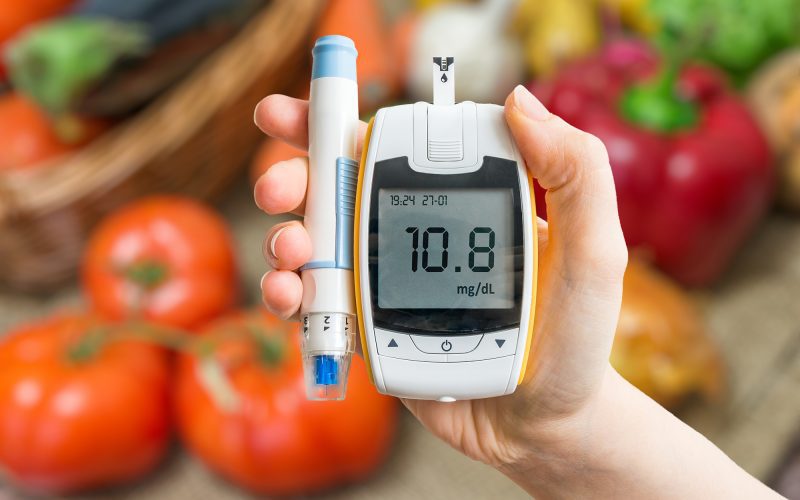Introduction
Diabetes is a chronic, long-lasting condition that profoundly influences how the body processes food into energy. As a prevalent health concern, gaining comprehensive knowledge about diabetes is crucial for individuals, caregivers, and healthcare professionals alike. This guide aims to break down the complexities of diabetes, providing an accessible and detailed resource for understanding its various aspects.
How Diabetes Works
At the heart of diabetes is the intricate interplay between food consumption, blood sugar levels, and the hormone insulin. When you eat, most of the ingested food is broken down into sugar, known as glucose, which is then released into the bloodstream. The pancreas, a crucial organ in this process, produces insulin, acting as a key that unlocks cells, allowing them to absorb and utilize glucose for energy.

Common Types of Diabetes
Type 1 Diabetes
Type 1 diabetes is characterized by an autoimmune reaction, where the body mistakenly attacks its own cells, specifically those responsible for insulin production. This immune system malfunction results in insufficient insulin production, leaving the individual unable to regulate blood sugar effectively. While only constituting about 5% of diabetes cases, type 1 diabetes often manifests in childhood or adolescence.
Type 2 Diabetes
Contrastingly, type 2 diabetes arises from the body’s inefficiency in using insulin coupled with an inability to maintain normal blood sugar levels. Approximately 90% of individuals with diabetes have type 2, and it typically develops over many years. While historically associated with adults, there’s a concerning rise in the diagnosis of type 2 diabetes among children, teens, and young adults, primarily due to lifestyle factors like poor diet and lack of physical activity.
Gestational Diabetes
Gestational diabetes occurs exclusively in pregnant women who did not have diabetes before pregnancy. While it typically resolves after childbirth, women with gestational diabetes and their babies face an increased risk of health complications. Moreover, this condition raises the likelihood of both the mother and the child developing type 2 diabetes later in life, emphasizing the need for vigilant monitoring and post-pregnancy care.

Prediabetes
Prediabetes serves as a crucial warning sign that often goes unnoticed. An estimated one in three individuals has prediabetes, a serious health condition where blood sugar levels are higher than normal but not yet high enough for a diabetes diagnosis. Unaddressed prediabetes significantly escalates the risk of developing type 2 diabetes, as well as heart disease and stroke. It is imperative to raise awareness about prediabetes and encourage proactive measures for prevention.
Symptoms of Type 2 Diabetes
While type 1 diabetes often manifests with noticeable symptoms, type 2 diabetes can be more insidious, with symptoms going unnoticed or ignored. It’s not uncommon for one in four individuals with diabetes to be unaware of their condition. Recognizing the symptoms is crucial for early detection and intervention. If you experience any of the following, it’s essential to consult with a healthcare professional promptly:
- Frequent Urination: Increased need to urinate, especially during the night.
- Excessive Thirst: Unquenchable thirst, often accompanied by dry mouth.
- Persistent Hunger: Feeling very hungry despite regular food intake.
- Fatigue: Extreme tiredness, especially after meals.
- Blurry Vision: Impaired vision or difficulty focusing.
- Delayed Healing: Cuts and bruises taking longer to heal than usual.

The Unseen Threat
One of the challenges with type 2 diabetes is its potential lack of noticeable symptoms, contributing to delayed diagnoses. Regular health check-ups and screenings become crucial in identifying diabetes early on, allowing for effective management and prevention of complications. In the absence of apparent symptoms, individuals should be proactive in seeking testing, particularly if they fall into high-risk categories, such as having a family history of diabetes or leading a sedentary lifestyle.
Comparative Table
| Type | Cause | Prevalence |
|---|---|---|
| Type 1 Diabetes | Autoimmune reaction | 5% of cases |
| Type 2 Diabetes | Inefficient insulin use | 90% of cases |
| Gestational Diabetes | Occurs during pregnancy | Risk in pregnant women |
| Prediabetes | Elevated blood sugar levels | 1 in 3 people |
The Road to Awareness and Prevention
Understanding diabetes goes beyond recognizing its types and symptoms; it’s about empowering individuals with the knowledge to take charge of their health. Proactive steps and lifestyle adjustments play a pivotal role in managing and preventing diabetes. Here are some key considerations:
Regular Check-ups
Routine health check-ups, including blood sugar screenings, are essential for early detection. For those with prediabetes or a family history of diabetes, these check-ups are paramount. Identifying diabetes in its early stages allows for timely intervention, minimizing the risk of complications.

Healthy Lifestyle Choices
Adopting a healthy lifestyle significantly contributes to diabetes prevention and management. This includes:
- Balanced Diet: Prioritize a diet rich in fruits, vegetables, whole grains, and lean proteins. Limit the intake of processed foods, sugary beverages, and excessive carbohydrates.
- Regular Exercise: Engage in regular physical activity, such as walking, jogging, or other forms of exercise. Physical activity not only aids in weight management but also enhances insulin sensitivity.
- Weight Management: Maintaining a healthy weight is crucial in preventing and managing diabetes. Even modest weight loss can have a substantial impact on blood sugar levels.

Education and Support
Educational initiatives about diabetes, its risk factors, and preventive measures are essential. Community support, both online and offline, can create a network where individuals share experiences, knowledge, and encouragement. Treatment for other health problems
Treatment and Medication
For those diagnosed with diabetes, personalized treatment plans, including medication and lifestyle adjustments, are essential. Regular monitoring of blood sugar levels ensures that the chosen approach is effective and adjustments can be made as needed.
Conclusion
In conclusion, diabetes is a multifaceted condition that demands a nuanced understanding for effective management and prevention. From recognizing the different types to understanding symptoms and adopting a proactive lifestyle, individuals can take charge of their well-being. Regular screenings, coupled with healthy choices, pave the way for a life where diabetes is not a barrier but a condition managed with knowledge, support, and resilience. Empowerment begins with awareness, and this comprehensive guide serves as a stepping











